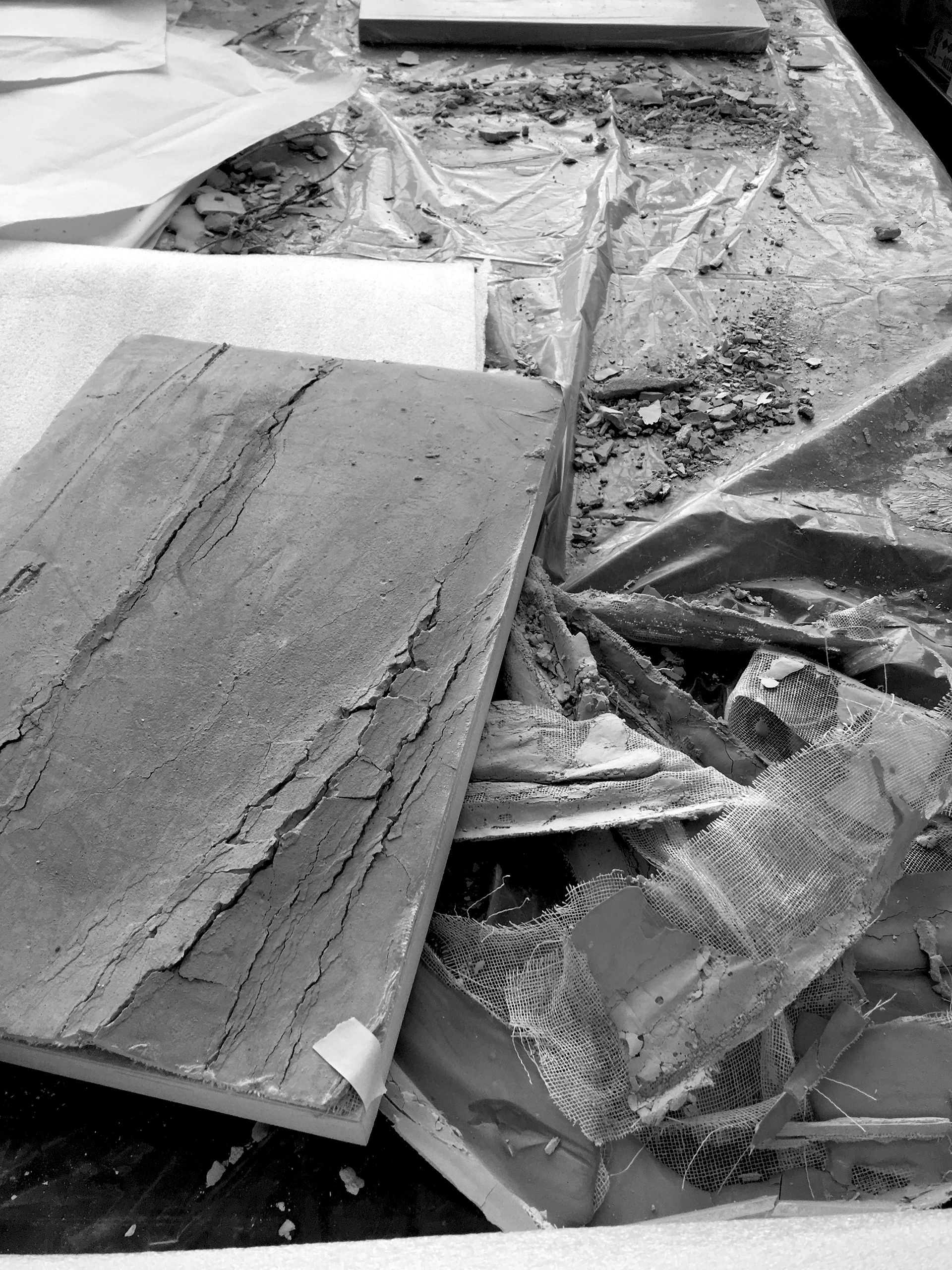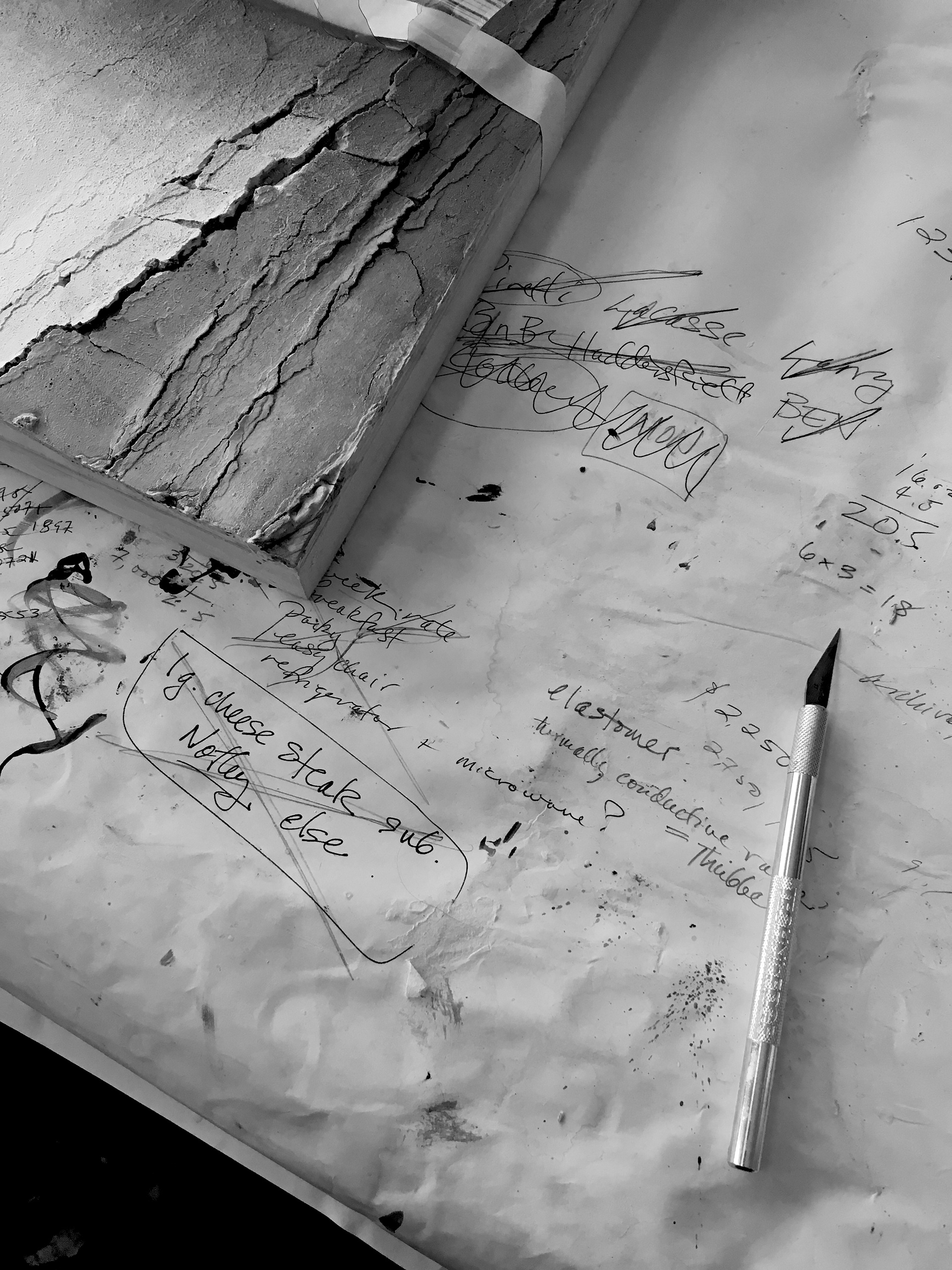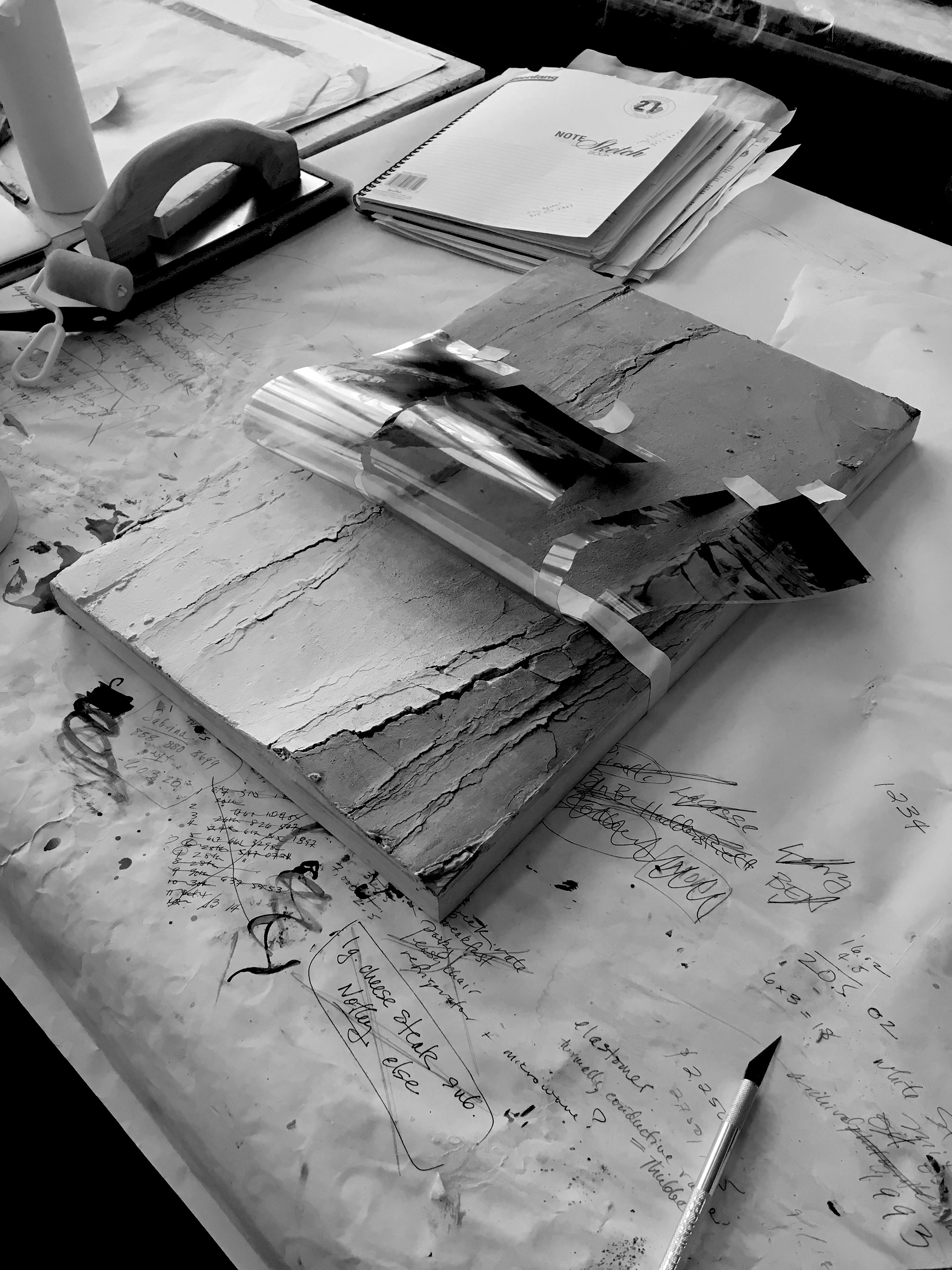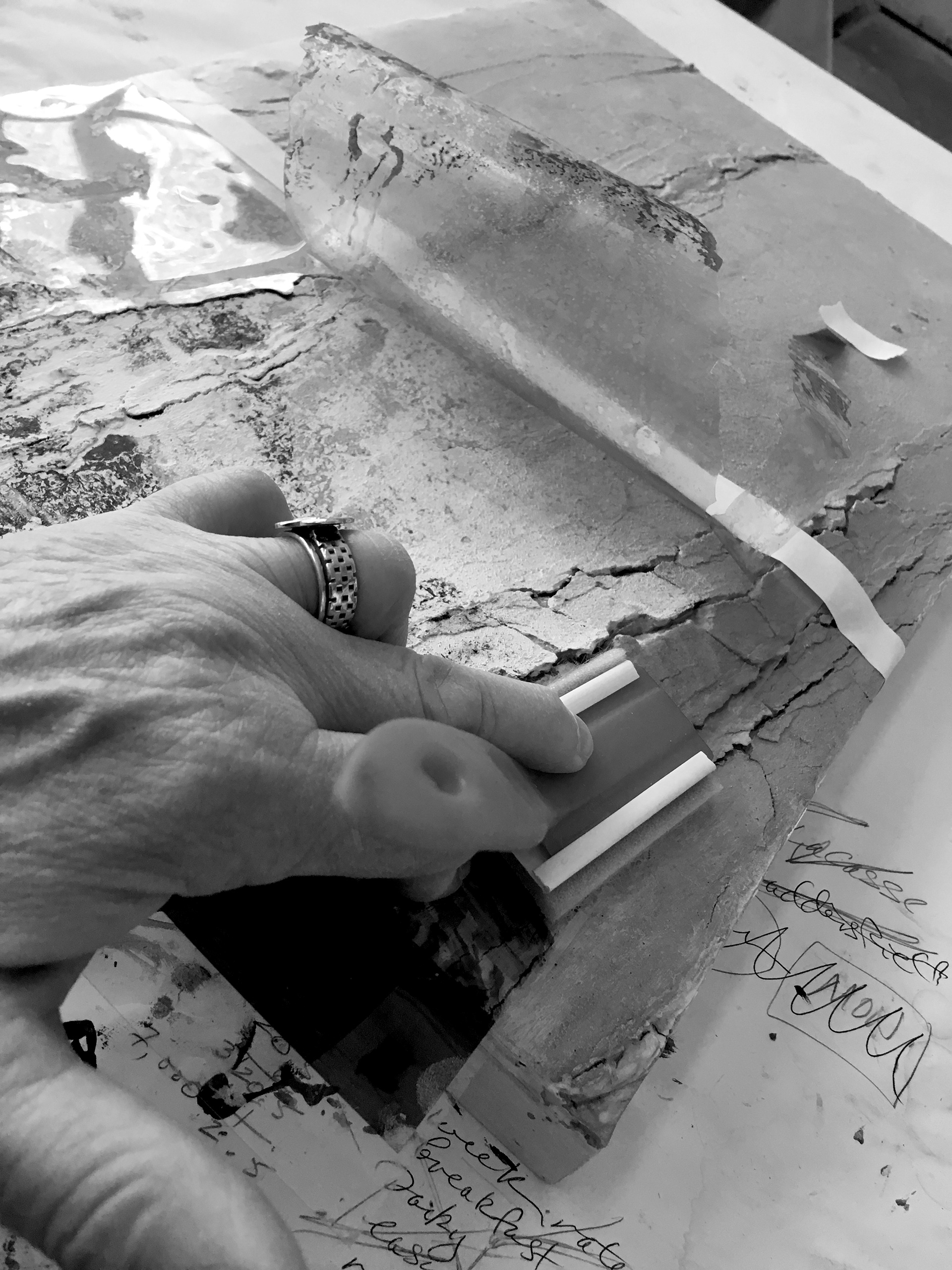Elaine Spatz-Rabinowitz is a visual artist employing photography, painting, sculpture and video. She was trained during the heyday of Abstract Expressionism when painters were pressed to renounce and question seductive, narrative illusionism.
From her schooling came a lasting urge to keep her love of imagery intact while simultaneously destabilizing or questioning it, which she does by harnessing painting’s inherent physicality. Collision between illusion and corporeality defines her practice.
She offers on the one hand perfectly rendered scenery only to undermine it by colliding it with aggressively physical plaster. Her methods lead us to intersections of imagery and materiality, of the fine and the rough, the controlled and the accidental, the safe and the threatened, the realistic and the abstract, and of painting and sculpture.
Spatz-Rabinowitz received a Guggenheim Fellowship in 2007 for her mixed media work on war and violence. Following a life-changing trip to the North Pole with the Arctic Circle Expeditionary residency program in 2013, her focus has shifted to issues of environmental collapse.
Her archive of photographs from the Arctic offered fine scenic detail but did not invite entry into surface quality. She seeks in her recent work to bypass their pure visuality and rematerialize them. When transferred as a translucent emulsion onto abraded, fractured plaster relief, her photographic images become haptic - appealing to one’s sense of touch and tactility.
Keeping detailed information largely intact, transferred veils of colored emulsion can reveal underlying abrasions and shifts of pigmentation in the plaster; or be obliterated entirely by the artist’s subsequent interventions and layers of oil paint. At times they form a skeletal layer of imagery to be enhanced and made more luminous by glazes and scumbling in oil.
That one cannot know exactly know how her images are formed—by pixel or by brush—contributes to their overall embodiment of precarity. These hybrid works invite a visceral response to the subject presented: our Arctic landscape and the threat of its disappearance. Spatz-Rabinowitz responds in a hands-on way to the headlines we live with every day, about melting ice and vanishing glaciers and all that they portend.
“Sing of human unsuccess
In a rapture of distress;”
In a rapture of distress;”
(W.H. Auden, "In Memory of W.B. Yeats,”
written on the eve of WWII)
written on the eve of WWII)




Elaine Spatz-Rabinowitz has been recognized five times by the Mass Cultural Foundation’s Artist Fellowship Program and received a funded Fellowship from the Bunting Institute (now Radcliffe Institute for Advanced Study) and a Guggenheim Foundation Fellowship in Visual Art. Select museum exhibitions include the Institute of Contemporary Art in Boston, Massachusetts; the Huntsville Museum of Art, Alabama; the Grand Rapids Art Museum, Michigan; the Center for Art, Design and Visual Culture, University of Maryland; and the Dorsky Gallery, New York. Her work has been shown in numerous galleries and is held in collections such as the Museum of Fine Arts, Boston, the Worcester Art Museum, the Addison Gallery of American Art, the Rose Art Museum, the de Cordova Museum, the Boston Public Library Prints & Drawings Collection, and the Davis Museum and Cultural Center.
Reviews and writings about her work have appeared in ARTnews and Art In America as well as the Pittsburgh Tribune, Pittsburgh City Paper, and The Boston Globe. Spatz-Rabinowitz also worked as a set designer with the director Peter Sellars on several international productions, and as principal artist in collaboration with him in their installation/performance “Sudden Difficulties” at the Institute for Contemporary Art in Boston. Born and raised in New York City, Elaine Spatz-Rabinowitz lives and works in Cambridge, Massachusetts. She is Professor of Art Emerita of Wellesley College and teaches painting at the School of the Museum of Fine Arts at Tufts University.